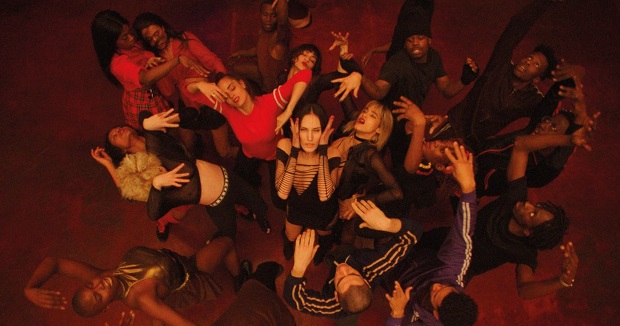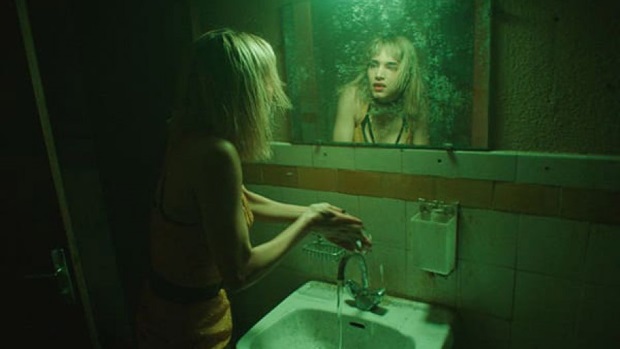Gaspar Noe interview: “American horror movies are more moralistic”
We chat to the controversial director about his LSD-laced psychological horror, Climax.
Throughout his career Gaspar Noe has made films that challenge the audience. From Irreversible’s uncomfortably long rape scene to Enter The Void’s literally nauseating visuals, his uncompromising style has led to certain expectations for an audience. With Climax, Noe has developed a little from his typical style, because while the film does have his trademark brutality, for a great deal of its running time it’s remarkably light. A fact we addressed when we spoke with the director earlier this month.
The opening scene to your movie certainly let us know something horrific was going to happen, but beyond that it’s almost joyous.
Until the end. Even last night when I went to see the movie at the movie theatre, I just watched the first scene, and then I came back for the last scene, and I saw that people were laughing when the brother talks to his sister. There is something fresh about the movie that is probably fresher than my previous movies. Many people have said, ‘it’s your funniest movie ever’, it’s very black humour.
Certainly the one that’s easiest to get through, I think, for an audience.
Also, my last movies were more than two hours long, so I think the timing makes it easier.
We’ll jump back on to some of the technical areas of the film in a second, but you mentioned last night, you were at FrightFest, weren’t you?
Yeah, it was the first time. I’ve never been to FrightFest before.
Do you think of it as a horror?
Psychological horror, yes. It’s a genre that I really like. I used to consume a lot of horror movies as a teenager, and some impressed me more than other ones. I would watch Romero’s movies, Dario Argento’s movies, Eraserhead over and over. Possession, Repulsion, Freaks. I was obsessed with the Masters of Horror cinema as much as I was obsessed with directors like, Kubrick, Fasbinder and Pasolini, but the truth is I get much more scared as a spectator in terms of the amount of adrenalin that is released in your brain when you’re watching a flat screen with actors pretending that they’re going through an experience, I get far more scared watching psychological horror movies like Four Months, Three Weeks And Two Days or Amour by Hanneke than when I go to see horror movies, or slasher movies, or a zombie movie.
In the case of this movie, everything could be real, but it has a horror movie feeling. I just read this morning an article written by an Italian friend that I missed while it was showing in Cannes, but there’s one thing that I liked, he was saying that this movie could be considered an Italian Giallo, because there is one murderer – in this case there’s the psychotic intention of one of the members – and you have the answer of who is the evil person at the very last take of the movie, and it’s not the one you expect. So he said it’s like a renovating of the Italian, Giallo genre with music and with dancers. It’s similar also with Suspiria, that it takes place in a dance school.

There’s a certain sensibility to European movies, particularly horror movies.
The American horror movies are more moralistic, they have not only good characters, but characters where the ultimate danger is death. What I like about European cinema is they have another sense of what’s good, what’s bad, and sometimes all the characters are far more complex than just that. It’s less binary, the Giallo genre. Even when you see Czech movies like The Cremator, or a French/German production like Possession, all the characters are half-normal, half-crazy, and I like when you put people in a situation where they don’t know where they’re standing, and who’s a good guy to follow, and who’s a good girl.
As a director, how do you approach getting that tone where it marries together both the really enjoyable moments early on, with the full knowledge that it’s going to get unpleasant later on?
If you’re hands-free because you’re not stuck to a script that you’ve written before shooting, and your producers don’t tell you, ‘don’t go to that place’, or scary places, then you can express yourself according to what you think is good for the moment. The movie could have been much scarier, the movie could have been much funnier, the movie could have been much more positive or negative, but again, if you’re hands-free and you’re working with the team you end up doing a collective project – I was using their improvised dialogue, I was taking the best of their improvised dances – then what comes out is something that you’d call your personality, or your charisma, or your fears and desires. In the case of this movie, that’s what I wanted to do. People say always I do heavy jokes, but they’re funny. The movie’s funny. Probably one day I’ll do a serious movie like Hanneke can do, but even when I see Hanneke’s movies I laugh. When I went to see Lars Von Trier’s last movie in Cannes I was laughing all the time, but some people were thinking ‘what a total, serious nightmare’… my perception is different.
You mentioned the open nature of this film, with limited script and all these other things…
But also for example, Irreversible, the whole script was just three pages long, and for Love we had a script that was five pages long. What was important was to have the structure of the plot – how you want it to start, how you want it to end – you don’t know how all the events are going to unfold second after second, what people are going to say, but you have an idea of how tall the skeleton is going to be.
Then once you know how you’re going to shoot it, will it be long master shots, or is it going to be made of still shots, and it’s going to be edited, then you create around those principles, the narrative structure and cinematic principles, and you do your best with the people around you. We had some film references also in mind when we shot the movie. Like the most unexpected one, probably, is Christiane F., I rewatched it for the eighth time lately, and it’s a big melodrama, very, very hardcore, with young kids doing drugs and coming to prostitute themselves to save their love story, but what amazed me when I rewatched the movie was how colourful the movie was, and how well-dressed the characters were. It’s very joyful in terms of colour, in terms of music. The movie is totally dark, and it’s dirty. So I asked both my cinematographer, my production designer – who was repainting all the locations – and my stylist, to be as colourful as they could be, but with scenes that would always look dirty.

It’s interesting that you brought up colour, because that’s something that carries throughout your work. How much attention are you giving to colour, and how much is coming from production designers and cinematographers?
If you go to some art director, or some cinematographer, it’s because you like their work, so you try to get the best partners. It’s like when you go to the World Cup, there are 11 people running after the ball on the ground to win. In this case I work with [cinematographer] Benoit Debie, not only because he’s the sweetest person in the world, but also because I love how he lights, the colours he uses, also the black inside the image. I propose ideas, he proposes ideas, and we’ll disagree. Even in my case with Benoit, I would ask him, ‘what do you think of the colour of the walls?’, ‘what do you think of the dress?’ and we would pick up the dresses, the shoes, the sofas, according to what he thinks in terms of colours which are good for the movie.
And then in terms of the choice of, say, a lighting gel, is that organic on the day, or is it planned?
No, you can choose it on the day, and then when it comes to the post production you can add some yellow colour grading to the scene to make it less white. There are many different layers, but if you want to have something colourful you’d better do it on the set, because if you film someone with grey clothes on a brown background it’s not going to be colourful, even if you colour grade it. So you have to take as many good decisions as you can while you’re shooting it, then you can always rearrange it a little bit.
You touched on post production; there’s something about the sound design of all of your films – there are bands like The Knife, that have a discordant sound, and it feels like your films are touching on the same thing, both visually and with the audio.
I’ve seen one music video that they did, and I watched it over and over, it’s the one with the trans performer.
Pass It On?
Yeah, I love that music video.
Your film reminded me a little of that music video.
That music video, Pass It On, is very realistic. It was shot in Sweden, but it could also be an excerpt of Christiane F., it’s like people deal with music, and people are poor, and I don’t know if the trans woman was singing in front of the young boys in the music video was a junkie – probably not – but you could see those same characters in Christiane F., and really what I liked about Christiane F. was that it was so respectful to every single one of its characters – the movie was, and the director was – and I also wanted to be as respectful as I could to every single character in my movie, because I really was in total admiration in front of these dancers, and they were the cutest persons in the world, and they were intelligent and playful and full of good ideas, so I said, ‘let’s do this movie together and come up with ideas’. I don’t like drama in life, they didn’t like it, so there was no drama on the set, but we all wanted to produce big drama on the screen.
Gaspar Noe, thank you very much.
Climax is released in the UK today.